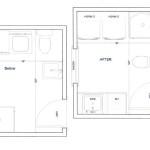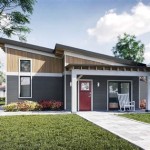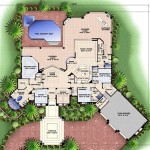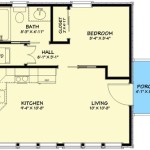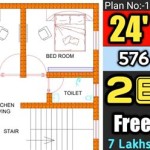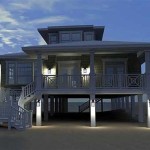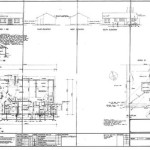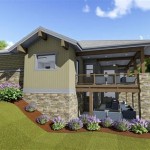House Over Garage Floor Plans: Maximizing Space and Functionality
House over garage floor plans represent a strategic approach to residential design, particularly valuable for maximizing limited lot sizes or accommodating specific lifestyle needs. These plans integrate a dwelling unit directly above a garage structure, offering a multitude of design possibilities and functional advantages. Understanding the nuances of these plans, including their benefits, challenges, and design considerations, is crucial for homeowners and builders alike.
This article delves into the various aspects of house over garage floor plans, exploring their inherent advantages, the potential drawbacks to consider, and the key elements involved in their successful implementation. The goal is to provide a comprehensive overview, enabling informed decision-making, whether one is considering building a new home or renovating an existing property.
Advantages of House Over Garage Floor Plans
One of the primary advantages of a house over garage floor plan is the efficient utilization of space. In urban areas where land is at a premium, these plans allow for a substantial living area without requiring a large footprint. The garage serves as the foundation for the living space, effectively stacking functions vertically and minimizing the overall ground coverage. This is particularly useful in zoning regulations that impose restrictions on building size or lot coverage.
Another significant benefit lies in the cost-effectiveness of construction. By building on top of an existing or planned garage structure, the need for a separate foundation is reduced. This can lead to significant savings in construction costs, particularly in areas with difficult soil conditions or challenging topography. Furthermore, the shared structural elements contribute to overall efficiency in material usage and labor costs.
Flexibility in design is also a key advantage. House over garage floor plans can accommodate a wide range of architectural styles and interior layouts. The living space above the garage can be designed as a separate apartment, a guest suite, a home office, or simply an extension of the main living area. This adaptability makes these plans suitable for various lifestyles and evolving needs. For example, a family could use the space as an in-law suite, or a homeowner could rent it out for additional income.
Enhanced privacy is another potential advantage, particularly when the living space above the garage is designed as a separate unit with its own entrance. This separation can provide a sense of independence and autonomy for occupants, whether they are family members, guests, or renters. The physical separation also helps to minimize noise transfer between the garage and the living space, contributing to a more comfortable living environment.
Finally, house over garage floor plans can increase property value by adding valuable living space without significantly altering the property's footprint. This can be a significant selling point for potential buyers, particularly in areas where space is at a premium. The added versatility of the space, whether it's used as a rental unit or a guest suite, can also enhance the property's appeal and marketability.
Potential Challenges and Considerations
While house over garage floor plans offer numerous advantages, they also present certain challenges that must be carefully considered. One of the primary concerns is structural integrity. The garage structure must be designed to support the weight of the living space above, which requires careful engineering and adherence to building codes. The foundation, walls, and roof of the garage must be robust enough to withstand the additional load, as well as wind and seismic forces. Consulting with a qualified structural engineer is essential to ensure the safety and stability of the structure.
Another important consideration is soundproofing. Garages are often noisy environments, and the sound of vehicles, tools, and other activities can easily transmit to the living space above. Proper soundproofing measures, such as insulation, sound-dampening materials, and acoustic barriers, are crucial to mitigate noise transmission and create a more peaceful living environment. This is particularly important if the living space is intended for sleeping or working.
Accessibility is also a key factor to consider. Access to the living space above the garage typically requires stairs, which can pose a challenge for individuals with mobility limitations. If accessibility is a concern, alternative solutions such as elevators or ramps may be necessary, although these can add to the cost and complexity of the project. Careful planning is essential to ensure that the living space is accessible to all occupants.
Insulation and energy efficiency are also critical considerations. Garages are often uninsulated or poorly insulated, which can lead to significant energy loss in the living space above. Proper insulation of the walls, roof, and floor is essential to maintain a comfortable temperature and minimize energy consumption. Attention should also be paid to air sealing to prevent drafts and air leaks. Using energy-efficient windows and doors can further enhance the energy performance of the space.
Building codes and zoning regulations can also pose challenges. Many municipalities have specific building codes and zoning regulations that govern the construction of accessory dwelling units or living spaces above garages. These regulations may address issues such as setbacks, height restrictions, parking requirements, and fire safety. It is essential to research and comply with all applicable regulations to avoid delays and penalties. Obtaining the necessary permits and approvals is a crucial step in the planning process.
Finally, design considerations related to aesthetics and functionality are important. The exterior appearance of the house over garage should be visually appealing and consistent with the surrounding architecture. The interior layout should be functional and comfortable, with adequate natural light and ventilation. Careful attention should be paid to details such as window placement, door locations, and the overall flow of the space. A well-designed house over garage can seamlessly integrate with the existing property and enhance its overall value.
Key Elements of Successful Implementation
Successful implementation of house over garage floor plans requires careful planning, attention to detail, and collaboration among various professionals. The first key element is a thorough assessment of the existing or planned garage structure. This assessment should evaluate the structural capacity of the garage to support the added load of the living space above. A structural engineer should be consulted to ensure that the garage is structurally sound and can safely accommodate the additional weight. If the garage is not structurally adequate, modifications or reinforcements may be necessary.
The second key element is a well-defined design plan. This plan should outline the layout of the living space, including the location of rooms, windows, doors, and staircases. The plan should also address issues such as soundproofing, insulation, accessibility, and energy efficiency. A qualified architect or designer should be involved in the creation of the design plan to ensure that it meets the homeowner's needs and complies with all applicable building codes and zoning regulations. The design plan should also consider the aesthetic aspects of the house over garage, ensuring that it is visually appealing and consistent with the surrounding architecture.
The third key element is the selection of appropriate materials and construction methods. The materials used in the construction of the house over garage should be durable, weather-resistant, and energy-efficient. The construction methods should be consistent with best practices and should ensure the structural integrity and safety of the building. A qualified contractor with experience in building house over garage structures should be selected to oversee the construction process. The contractor should be licensed, insured, and familiar with local building codes and zoning regulations.
Effective communication and collaboration among the various professionals involved in the project is also crucial. The homeowner, architect, engineer, and contractor should work together closely throughout the planning and construction process to ensure that the project is completed successfully and on time. Regular meetings and site visits should be conducted to address any issues or concerns that may arise. Open communication and collaboration can help to prevent misunderstandings and ensure that the project meets the homeowner's expectations.
Finally, careful attention to detail is essential. Every aspect of the project, from the foundation to the roof, should be carefully inspected and verified to ensure that it meets the required standards. Any defects or deficiencies should be promptly corrected to prevent future problems. A thorough final inspection should be conducted before the project is completed to ensure that all aspects of the project have been properly addressed and that the building is safe and habitable. Adhering to meticulous standards and following quality assurance processes is paramount for a long-lasting and functional outcome.

Garage Apartment Floor Plans And Designs Cool

Modern Farmhouse Apartment Garage Oak Hills Carriage House Plans Barn Pole

10 House Plans With Three Car Garages Houseplans Blog Com

Bonus Room Above Garage Floor Plans Houseplans Blog Com

Plans Master Suite Over Garage Bedroom Above Floor House 797 Apartment

Garage Apartment Floor Plans And Designs Cool

24x36 House Plans Google Search Garage Apartment Floor

Apartment Over Garage Plan

House Plan With 2 Car Garage

2 Bed 1 Bath 1000 Sqft Above Garage Apartment Plans Floor

